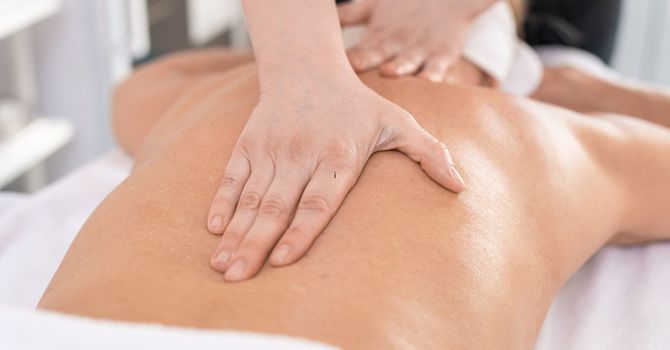
First of all, you may be thinking what is myofascial release? Well, myofascial release is a hands on treatment approach that applies slow sustained pressure with the hands onto the body. Typically, it’s a treatment modality used in rehabilitation and wellness settings.
In our bodies, we have a weblike system called fascia which covers all our body structures from head to toe. It’s purpose is to surround, protect, and support structures within the body. The fascia system is important because it is continuous throughout the body.
Fascia restrictions can occur during incidents whether small like bending over to retrieve toys off the floor or large like having surgery. For instance, if there are fascia restrictions in an area in the body, it can pull and create tension in other areas of the body causing stiffness and pain. Also, fascia restrictions can affect us at the cellular level by causing dehydration, hormone imbalance, and toxicity problems.
There is also a mind body connection involved as well. For example, if someone was in a car accident and sustained a back injury. Not only is there a physical injury, you may find that months even years later those memories can still linger in your body. You may become anxious during driving and/or experience your heart racing when you drive.
Can you remember a time when you hurt yourself and can still remember possibly where it was and how it happened? Our bodies are capable of remembering these events subconsciously and can hold on to the trauma that occurred whether or not it was a fall during childhood event or car accident that occurred.
So how can myofascial release help?
If you are experiencing chronic pain and/or discomfort anywhere in your body, myofascial release can help you.
Listed below are 5 ways myofascial release can improve your health.
Myofascial release can…
- Decrease pain and stiffness to improve function so that you can get back to activities you love
- Decrease stress and tension to improve energy to participate in leisure and work activities
- Correcting posture and body awareness to become more connected to the body
- Improve your circulation to absorb nutrients, hormone balance and immune support
5. Help you develop a self-care routine that can support your body to initiate and maintain the natural healing process and integrate it into your daily life.
Who can benefit from myofascial release?
Anyone who wants to actively participate in their health would benefit from myofascial release.
If you would like to learn more about MFR, Feel free to check out JF Barnes website which contains a wealth of information: www.myofascialrelease.com
Book your Myofascial Release appointment so that we can work together and start experiencing this beautiful practice!
If you have any questions, you can contact or email me Here.
Kind Regards,
LaTess Echavarria, OT
MFR Therapist



